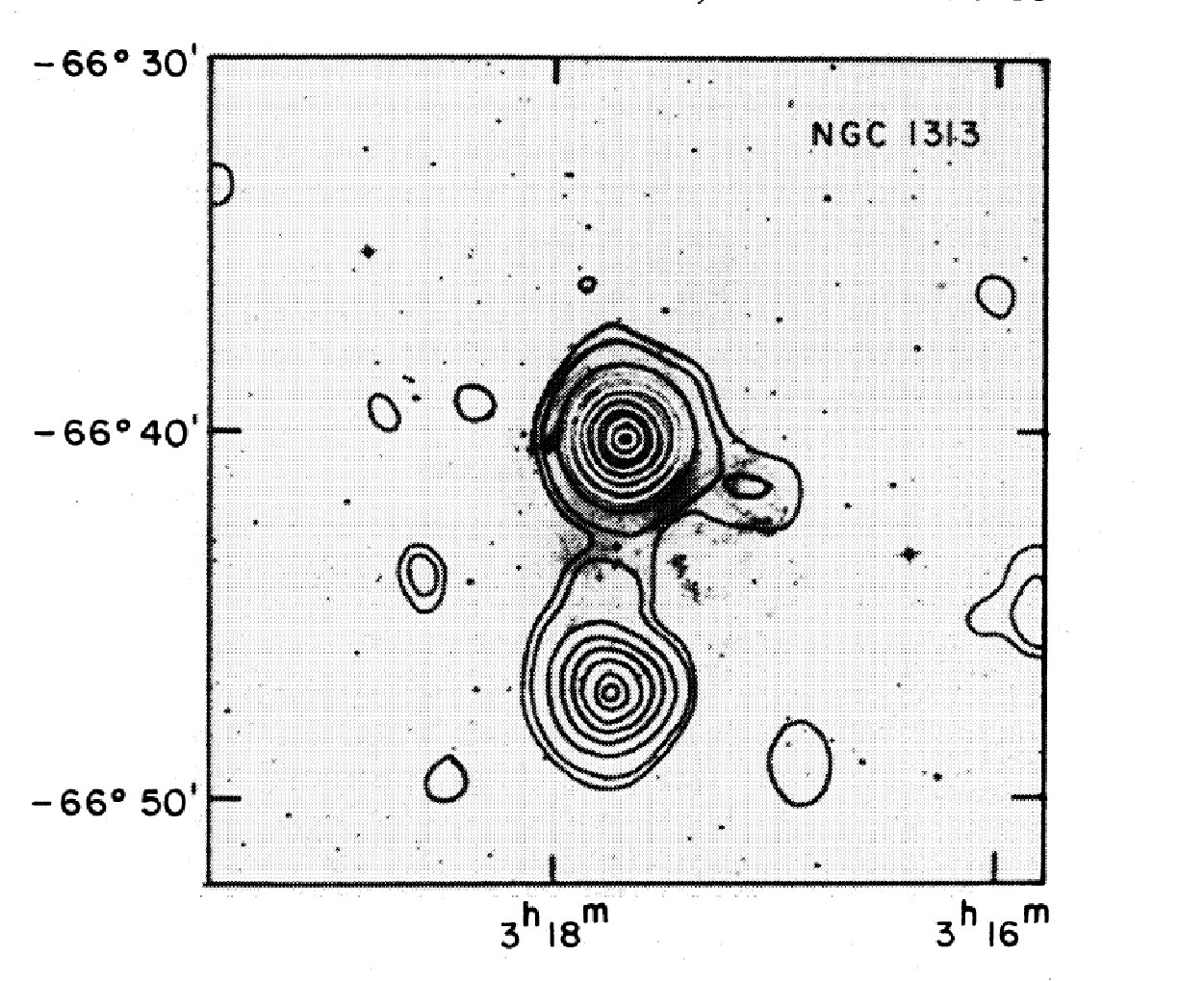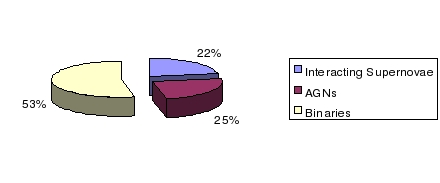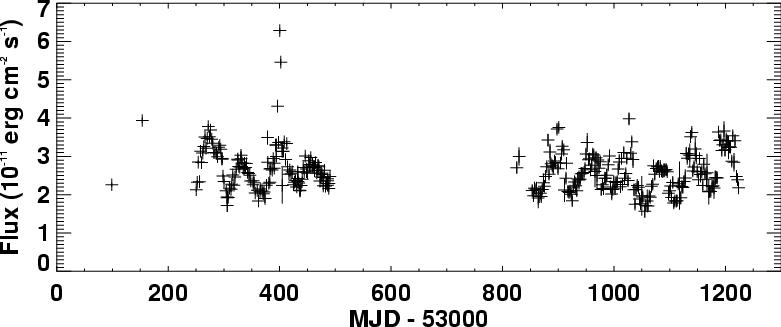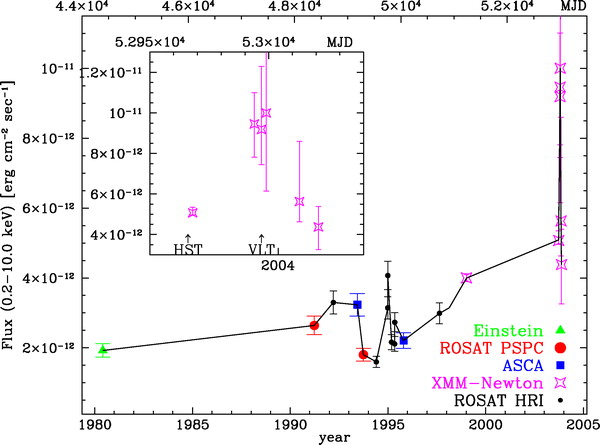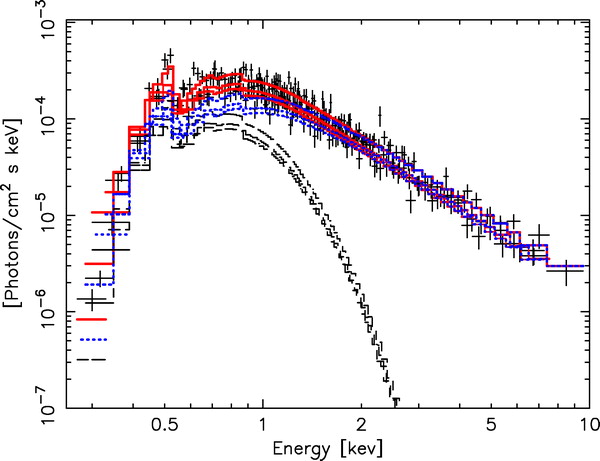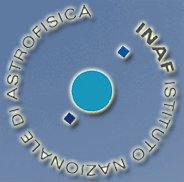 |
INAF-OSSERVATORIO ASTRONOMICO DI PADOVA LUCA ZAMPIERI |
||||||||||||||||||||||||||||
The recent detection of a ~62 days modulation in the light curve of M 82 X-1, interpreted as the orbital period of the system, has provided a strong confirmation of the binary nature of ULXs (Kaaret et al. 06a,b; Kaaret & Feng 07). A periodic modulation (12.5 hrs) has recently been detected also in another ULX (NGC 3379; Fabbiano et al. 2007). This fact, along with the long-term flux variability, the correlated luminosity/spectral variability and the detection of stellar optical counterparts, strongly suggest that the majority of ULXs are accreting binaries. Also the spectral properties show similarities with those of X-ray binaries (XRBs) in our Galaxy (e.g. Foschini et al. 02). In several cases the spectrum can be well reproduced by a multicolor disk (MCD) blackbody, representing emission from an accretion disk, plus a power law (PL), although the temperature of the MCD component is often much lower than that observed in XRBs (e.g. Miller et al. 03, 04; Feng & Kaaret 05). Both the low MCD temperature and very high luminosity of these systems have been used to estimate the BH masses, typically obtaining values in excess of 100 solar masses. This has led to the suggestion that these sources may contain black hole of intermediate mass between that of the stellar mass black holes in Galactic binaries and the supermassive black holes in AGNs. However, for some of the brightest ULXs, a possible curvature above 2-3 keV has been reported and equally acceptable fits of their spectra may be obatined with (physically) different models, that suggest the presence of an optically thick corona, a fast ionized outflow or a slim disc (e.g. Stobbart et al. 2006; Goncalves and Soria 2006; Mizuno et al. 2007), Recently, the detection of a quasi periodic oscillation in the power density spectrum of M 82 X-1 and NGC 5408 X-1 has shed new light on the timescales in the inner accretion disk of these systems, providing an independent way to assess the black hole mass (Strohmayer & Mushotzky 2003; Fiorito & Titarchuk 2004; Mucciarelli et al. 2006; Strohmayer et al. 2007). Stellar optical counterparts have been discovered to be associated with a number of ULXs (Roberts et al. 01; Goad et al. 02; Liu et al. 02, 04; Kaaret et al. 04; Zampieri et al. 04; Kaaret 05; Mucciarelli et al. 05; Soria et al. 05), altough only some of them have been associated with stellar objects of known spectral type (e.g. Liu et al. 02, 04; Kaaret et al. 04; Mucciarelli et al. 05). In all case, the counterparts appear to be hosted in young stellar environments and have properties consistent with those of massive stars. Some ULXs are also associated with extended optical emission nebulae (Pakull & Mirioni 02). NGC 1313 X-2 is one of the best studied ULXs (Miller et al. 2003; Zampieri et al. 2004; Liu et al. 2007; Mucciarelli et al. 2005, 2007). An accurate source position (with an uncertainty of 0.7" at 1 sigma) was derived on the basis of a 19 ks Chandra exposure, leading to the identification of the optical counterpart (Zampieri et al. 2004). Follow-up ESO VLT observations revealed two distinct objects inside the Chandra error box (Mucciarelli et al. 2005). A recent X-ray/optical observational campaign with Newton-XMM and HST has been conducted on this ULX. Some XMM pointings are simultaneous to the optical observations, allowing for a study of the possible correlation between the X-ray and optical variability of the proposed ULX counterparts. The X-ray/optical variability properties of this ULX appear to be consistent with those of a binary system where a donor of 10-18 solar masses is dumping matter through Roche-lobe overflow onto a black hole of at least 70 solar masses, with an orbital perido of ~2 days (Mucciarelli et al. 2007). The present debate is centered on understanding what type of binaries ULXs are. Many of the ULX properties can be explained if they do not emit isotropically (King et al. 01; King & Pounds 03) or are dominated by emission from a relativistic jet (e.g. Kaaret et al. 03). Another possibility is that they are truly emitting above the Eddington limit for 10 solar masses, either because accretion proceeds through a slim disk (e.g. Ebisawa et al. 03) or because the compact object is an intermediate mass black holes with a mass in excess of 100 solar masses (e.g. Colbert & Mushotzky 99). The question is still open. Well established masses for individual sources may only be obtained through measurements of the dynamical mass function of the ULX systems by means of the shift of the donor spectral lines that, at a magnitude ~24, can be detected only with 8m class telescopes. In this respect, the optical counterpart of NGC 1313 X-2 represents an ideal target. At the same time, high counting statistics X-ray spectra and a monitoring of the timing properties of a selected number of objects will provide crucial information on the physical properties of the accretion flow and their connection with the mass of the black hole. |
|||||||||||||||||||||||||||||
|
|||||||||||||||||||||||||||||
